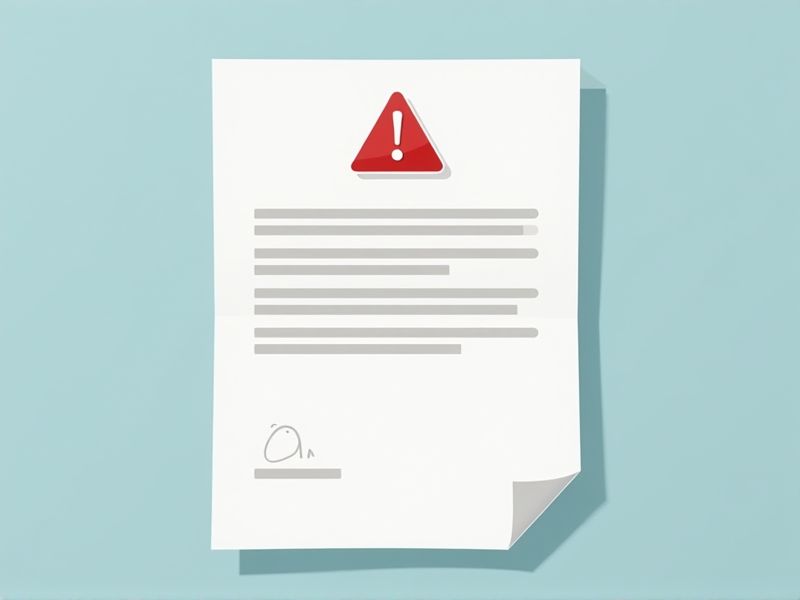
A warning letter to an employee is an important tool used by employers to address workplace issues such as poor performance, misconduct, or violation of company policies. It serves as a formal notice that highlights specific concerns and outlines the expected improvements or consequences if the behavior continues. Writing an effective warning letter requires clarity, professionalism, and a focus on constructive feedback to encourage positive change. This letter not only protects the company's interests but also provides the employee with a clear understanding of the situation and how to correct it. To assist you further, check out the various warning letter templates available in this article.
Samples of letter for warning to employee
Employee Warning Letter Template For Misconduct
Written Warning Letter Template For Attendance Issues
Professional Warning Letter Format For Policy Violation
Disciplinary Warning Letter Sample For Performance Failure
Notice Of Warning Letter Template For Behavioral Issues
Final Warning Letter Template For Repeated Offenses
Formal Warning Letter Example For Code Of Conduct Breach
Employee Reprimand Letter Template For Safety Violations
Hr Warning Letter Format For Poor Customer Service
Notification Of Warning Letter Template For Language Use
Employee Performance Warning Letter Template For Missed Deadlines
Warning Letter Sample For Inappropriate Conduct At Work
Warning Letter Format For Violation Of Company Policy
Written Notice Of Warning Letter Template For Harassment
Employee Disciplinary Action Letter Template For Lateness
Warning Letter Template For Failure To Meet Job Expectations
Employee Conduct Warning Letter Sample For Insubordination
Warning Letter Format For Failure To Follow Procedures
Managerial Warning Letter Template For Teamwork Issues
Employee Behavior Warning Letter Example For Conflict Resolution
Important Things to Know when Writing Letter For Warning To Employee
Clear Description Of The Issue Or Behavior
A well-crafted warning letter template for an employee should clearly outline the specific issue or behavior that prompted the warning. This description should include relevant details, such as dates, incidents, and any previous discussions or warnings about the behavior. Providing this context helps ensure the employee fully understands the rationale behind the warning and the seriousness of the matter. By being direct and precise, you foster an environment of transparency and accountability within the workplace.
Reference To Company Policies Or Rules Violated
A well-crafted warning letter template should explicitly reference the specific company policies or rules that the employee has violated. This ensures clarity and provides a concrete basis for the warning, helping the employee understand the seriousness of their actions. Clearly citing these rules not only reinforces the company's standards but also protects the organization legally should further action be necessary. Incorporating this information fosters transparency and accountability in the workplace.
Specific Examples Or Incidents Cited
When crafting a warning letter for an employee, it is crucial to include specific examples or incidents that illustrate the behavior or performance issues. This provides clarity and context, helping the employee understand the seriousness of the situation. By citing concrete instances, you demonstrate that the warning is not arbitrary, fostering a sense of fairness. Including these details also aids in documenting the progression of issues should further action be necessary.
Consequences Of Continued Misconduct
When creating a warning letter template for an employee, it's crucial to clearly outline the potential consequences of continued misconduct. This section should specify the steps the organization may take if the behavior does not improve, which can range from additional disciplinary action to possible termination. You must ensure that these consequences are communicated objectively and supportively, allowing the employee to understand the seriousness of the situation. Transparency in this area will help the employee recognize the impact of their actions on the team and the organization as a whole.
Instructions For Improvement And Follow-Up Actions
A well-crafted warning letter to an employee should include clear instructions for improvement, outlining specific behaviors or performance issues that need to be addressed. These instructions should be detailed and actionable, guiding the employee on how to meet the expected standards. Moreover, it's essential to specify follow-up actions, such as scheduled meetings or performance reviews, to monitor their progress and provide support. This approach not only clarifies expectations but also demonstrates your commitment to helping the employee succeed.
